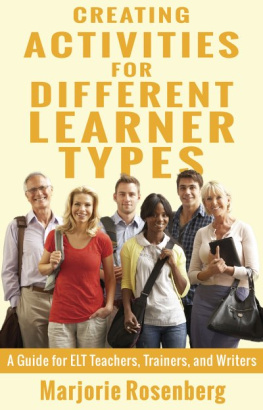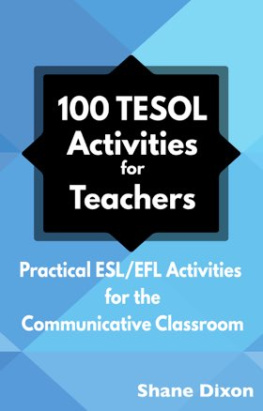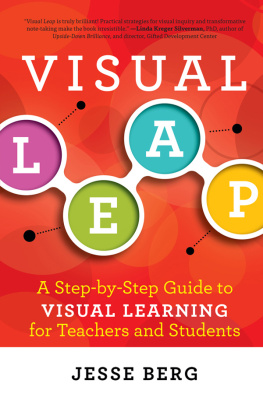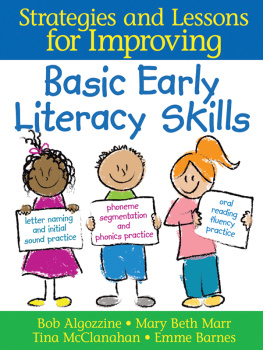All rights reserved.
No part of this book may be reproduced in any form or by any electronic or mechanical means, including information storage and retrieval systems, without written permission from the author, except for the use of brief quotations in a book review.
Edited by Dorothy Zemach.
Cover design by DJ Rogers.
Introduction
As teachers, we are dedicated to improving the English language skills of our learners. We do this because we want to support them in their life goals and to help them succeed. In using a communicative approach to teaching reading, writing, speaking and listening skills, we are well placed to naturally incorporate life skills into our classrooms.
While hard skills, such as engineering, product design and computer coding are technical and vocation focused, life skills are beneficial in any environment. Often referred to as soft skills, 21st century skills or transferable skills, life skills are the skills essential for success. They equip students for their future, help them to find work, support their educational journey and give them confidence to grow. There are literally hundreds of life skills but some of the most sought after are communication, team working, critical thinking, problem solving and creativity.
This book groups life skills into five categories. Each of the skills listed below are represented by tips and activities to support students in their skills acquisition.
Social: Intercultural communication, networking, collaboration, communication, active listening, negotiation, confidence, self-awareness, decision making, planning, self-expression, stress management
Academic: Research, note-taking, public speaking, editing, proofreading, giving and receiving feedback, productivity, motivation
Critical thinking: Observation, interpretation, analysis, inference, evaluation, explanation, metacognition, problem solving, creativity
Digital: Social media, online networking, blogging, creating presentations, word processing, audio-visual recording
Work: Organisation, team working, working under pressure, flexible working, interview, leadership, mentoring, challenging others, influencing, responding to criticism
This book provides ideas to incorporate life skills into your English Language classroom. These include tips and activity ideas, many of which embrace project based learning techniques. Project based learning is a teaching method in which learners work together on a collaborative project, problem or task. In the process of working towards a shared goal, students can develop a variety of life skills.
The activities and tips within this book support the acquisition of a number of life skills in tandem. For example, creating a class magazine involves digital, planning, collaboration, negotiation and evaluation skills.
As you read the tips in this book, keep a few things in mind:
Every teaching context is different as are the needs of every learner. Some students will already have a strong grasp of life skills, while others have a longer road to travel. It is up to you to work with your learners and identify which life skills are most appropriate to them.
Life skills take time and practise. Give sufficient time to allow your learners to develop their life skills. These skills cannot be learned overnight. Instead set realistic goals based on their current skills level and give time to process the information, respond and incorporate it into their lives.
Create a supportive and encouraging environment. As with all learning, it is essential that students feel comfortable in the classroom and that they feel positive about their learning experiences. Praise learners for their achievements and frame any mistakes or failures as learning opportunities. Give students time to think before they respond, reflect on their learning and practise their new skills.
Life skills are a work in progress. In many ways, developing life skills is aspirational. They are not something that anyone can truly say they have mastered and couldnt improve on in some way. Even the most inspiring speaker could develop their presentation skills in some way or another. Give students the confidence to grow and reassure them that their goals are achievable with a little hard work.
Be a good role model. Students naturally look to their teachers for how to behave and succeed in life. Theyre not going to take you seriously during your time management lesson if youre always late and forget to mark their homework! Likewise, prepare to be questioned and to retract any mistakes you make in class; thats when you know your students critical thinking skills are developing.
Life skills complement each other. Although Ive categorised the tips and activities each one promotes numerous life skills. For example, although building Bridges and Tall Towers is a social skill, it also promotes critical thinking, academic and work skills.
Every lesson is an opportunity to teach Life Skills. Take each lesson as it comes and make it count!
HOW TO USE THIS BOOK
This book gives ideas about how to improve your students life skills. The book is divided into five categories:
- Social
- Academic
- Critical thinking
- Digital
- Work
Although you may wish to skip directly to the skill that you feel your students require the most, I recommend reading the book in its entirety and returning to the sections that you find the most relevant to your students. There is a lot of crossover and one activity may well support a number of life skills.
Here is a suggested method for using this book:
- Read through all of the fifty tips without stopping and highlight any that you think are relevant for your students.
- Read through the tips again and select the top five or six best suited to your teaching context. Decide when you will try them.
- Each time you use one of the tips, reflect on how well it worked and how you could use it again or extend upon it. Remember that most of the tips will work best if you use them several times (or even make them a habit).
- Every few weeks, read through the tips again and try out any new ones that you find useful.
Finally, consider trying some of the other books in our 50 Ways to Teach series. The series includes special volumes for teaching different skill areas, young learners, teenagers, teaching online, and using technology in the classroom. Improving your own teaching skills in these areas can only help you improve your own life skills.









